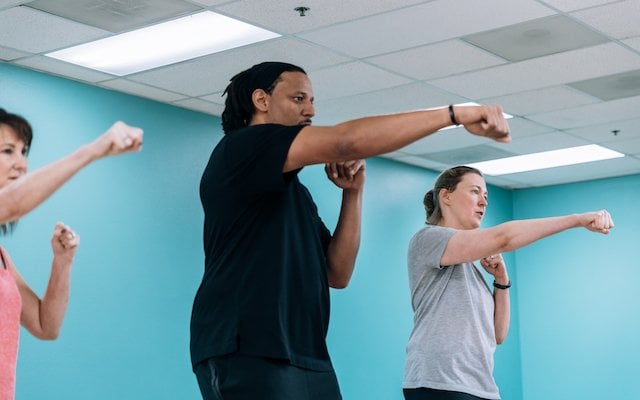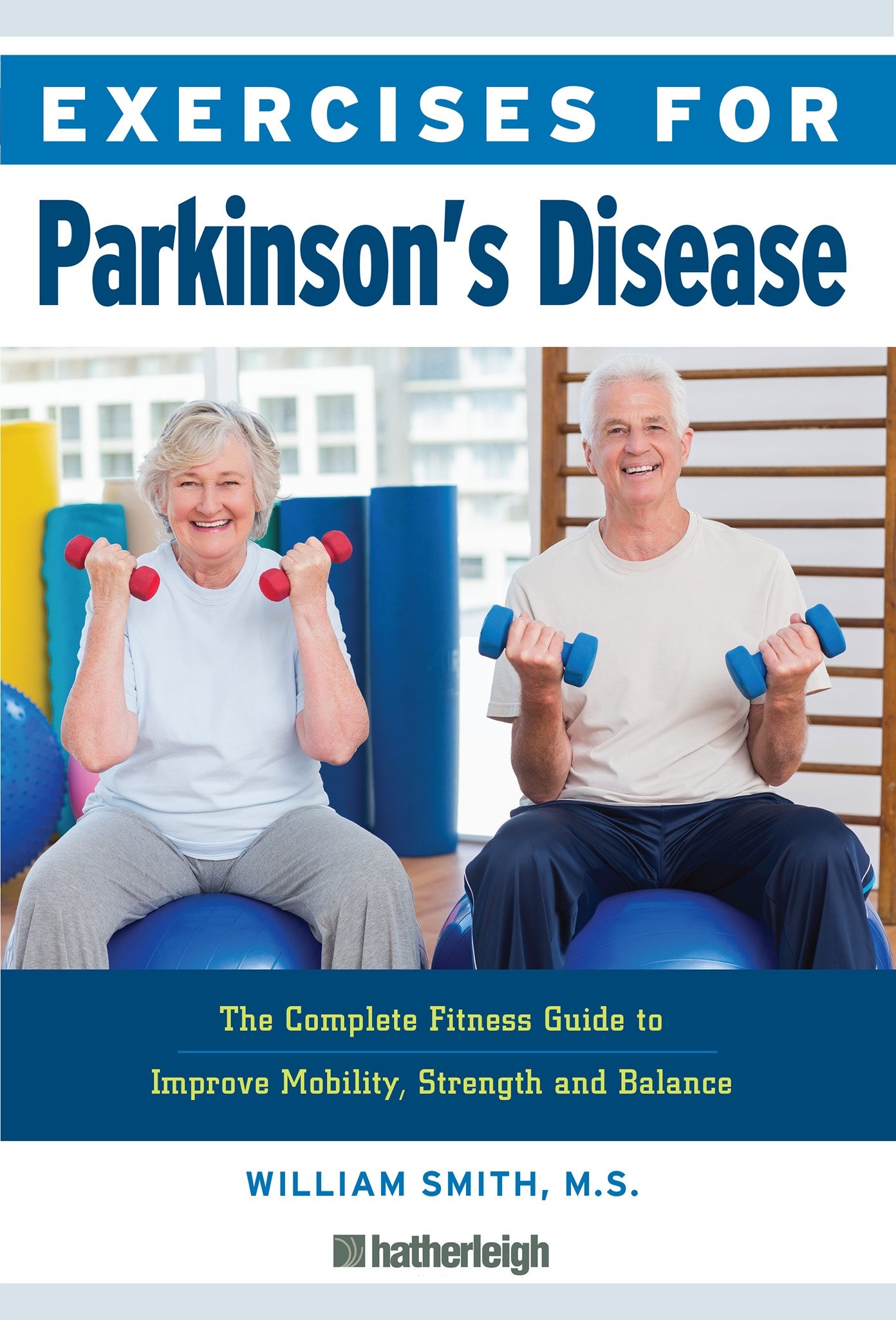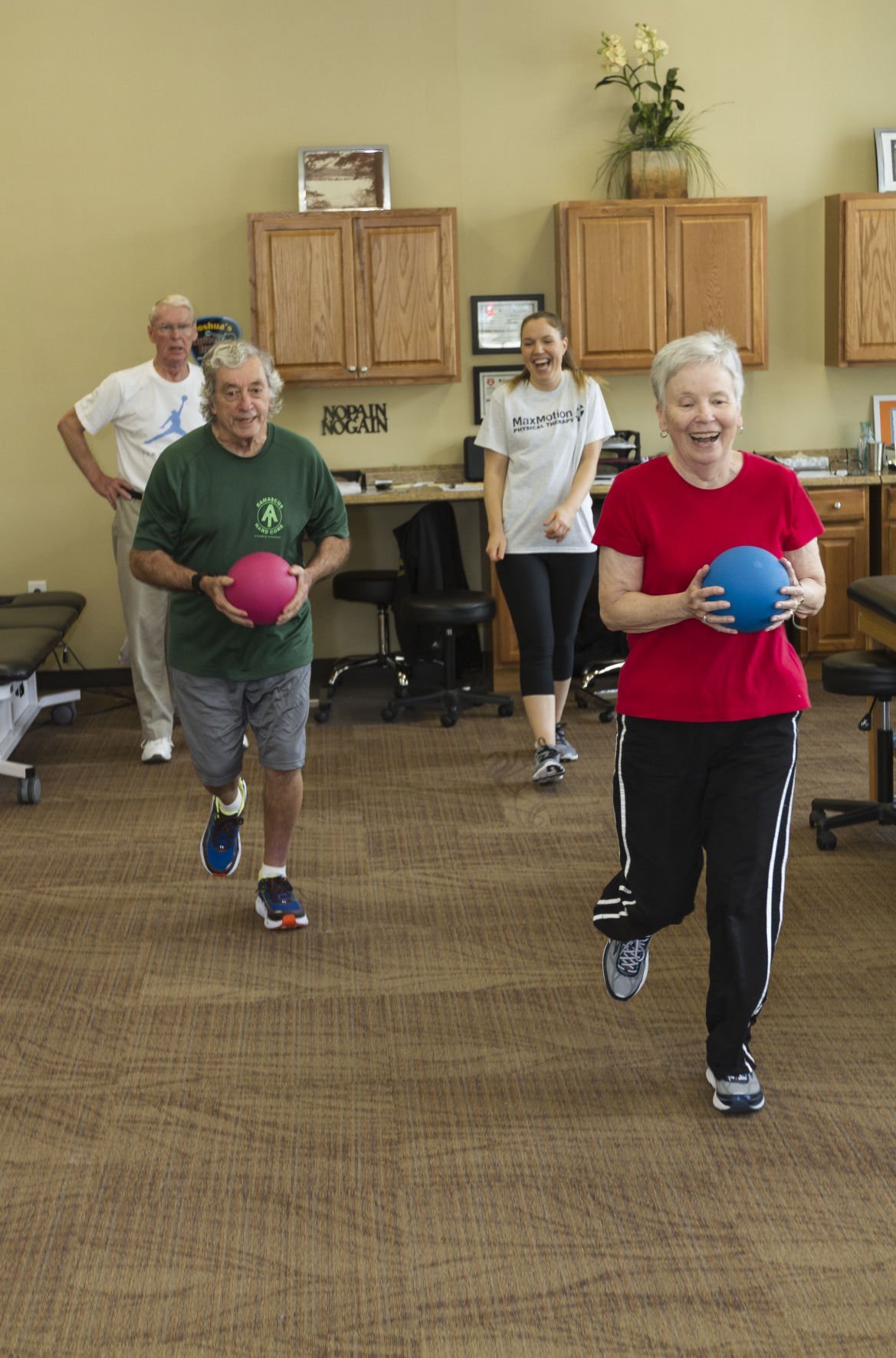The Potential Neuroprotective Effect Of Exercise
Arguably the most important benefit of exercise if you have Parkinsons disease is its neuroprotective effects. The Parkinsons Foundation defines neuroprotection as defenses against the damage, degeneration, and/or death of neurons, or the cells in your nervous system.
This is important, given that Parkinsons interferes with the neurons in your brain that control body movement.
In fact, the Parkinsons Foundation says that interventions that provide neuroprotective benefits, including exercise, can change the course of Parkinsons disease in other words, slow the progression of symptoms.
Stretching And Flexibility Exercises Help Keep You Limber
The Parkinsons Foundation says that stretching and flexibility exercises should be the first step in your exercise program. These exercises help offset the muscle rigidity that comes with Parkinsons disease, and people who are more flexible tend to have an easier time with everyday movements like walking, the Parkinsons Foundation adds.
Although theres no standard stretching regimen for people with Parkinsons, the Foundation suggests:
- Performing stretching routines lasting at least 10 minutes at a time
- Stretching at least three to four times per week
- Holding stretches for 10 to 30 seconds and performing three to four repetitions of each stretch
- Breathing evenly in and out during each stretch
- Not stretching to the point of pain instead, each stretch should feel like a gentle pull
In addition, a flexibility program should focus on areas of the body most affected by symptoms, including the chest wall, shoulders, elbows, back of the thighs and knees, calves, wrists and palms, lower back, and neck.
Stretches and flexibility exercises can be performed while seated or lying down, to avoid strain on your muscles and fatigue.
Which Types Of Exercise Are Best For Parkinsons
It is important to state upfront that there is no one best type of exercise for people with PD. It is most important to choose an exercise regimen that you enjoy, and will continue to do.
However, beyond doing exercise that you will stick with, there are some additional concepts to consider when designing an exercise program for someone with PD.
Also Check: How Quickly Does Parkinson’s Dementia Progress
Should I Talk To My Healthcare Provider Before I Start Exercising If I Have Parksinson’s Disease
Talk to your neurologist and your primary care provider before starting a new exercise regimen. They can:
- Counsel you on how intense your exercises can be.
- Recommend exercises appropriate for your individual health.
- Refer you to a physical therapist to create a personal exercise program.
- Warn about exercises to avoid based on your particular challenges or limitations.
Keep On Moving Exercises To Do At Home

Four short videos designed to be challenging and engaging, including physical amplitude, arms and legs working and thinking together, brain exercise, daily-life moves / dance-like exercise. Repeat them as often as you need to improve your individual outcomes.
Coming soon – breath and voice exercise.
Read Also: Foods To Help With Parkinson’s Disease
What Types Of Exercise Can Help Manage Parkinsons Disease
There are several types of exercises you can do to manage Parkinsons disease. You can create a varied routine based on your specific concerns, fitness level, and overall health.
Aim to do at least a few minutes of movement each day. Include exercises that improve cardiovascular health, flexibility, and strength. If you change up your exercises every week. your body can learn new ways to move.
There are a few different types of exercise that may be especially helpful to those with Parkinsons, including:
- physical and occupational therapy
The Benefits Of Yogafor Parkinsons Disease
According to the Parkinsons Foundation, yoga can help with flexibility, breathing, and posture as well as relaxation and stress reduction. Best of all, its a self-paced activity, the foundation adds, which means you dont have to perform certain exercises if your physical limitations get in the way. Bonus: Your routine can be modified depending on your needs for example, doing seated yoga in a chair.
Yoga is really my go-to, Subramanian says. Mind-body exercises are really beneficial for mental health, which is important given the risk for anxiety and depression in Parkinsons disease.
Don’t Miss: How Long Parkinson Patients Live
Aquatic Exercisecan Improve Your Balance
According to the APDA, exercising in water is a safe and effective way to improve balance and strength in people with Parkinsons disease. In general, the organization says, buoyancy from simply standing in the pool can help support weaker muscles and improve a persons balance and posture.
Swimming, or even performing some strength and flexibility exercises in the water with the water providing resistance enhances muscle tone, balance, and mobility with minimal stress on the body. The APDA offers a brochure with suggested aquatic exercise routines and general tips.
Exercise Is Both Treatment And Prevention
There is growing evidence that exercise, particularly vigorous exercise, may provide neuroprotective effects that can improve motor function, cognition, and quality of life in patients with PD. Exercise is now considered a treatment of PD with multiple benefits and few adverse effects.3,4
Animal and prospective cohort studies provide evidence that vigorous exercise may exert neuroprotective effects and decrease the risk of developing PD. There have been several cohort studies suggesting that regular exercise during the midlife period reduces the risk for PD years later. Meta-analysis of prospective studies affirms the diminished risk of developing PD following moderate to vigorous physical activities in preceding years.5-7 An analysis of 2 prospective cohort studies that included 48,574 men and 77,254 women showed a 60% reduced risk of PD in men who performed at least 10 months of strenuous exercise per year compared to those who regularly exercised less than 2 months per year.5 Similarly, the results of the prospective Cancer Prevention Study II Nutrition Cohort, which followed over 140,000 participants from 1992 and 2001, showed that those who underwent moderate to vigorous activity had 40% lower risk of PD than those who did not.6
Dont Miss: Does Vitamin B12 Help Parkinsons
Also Check: American Parkinson Disease Association Charity Rating
Build Muscles With Bodyweight Exercises
Seniors with Parkinsons disease may need to limit their use of free weights and barbells due to the risk of injury. However, they can still get a full workout by using their body weight as resistance. Traditional exercises such as pushups and wall sits can still be done by seniors with Parkinsons disease. However, some exercises may need to be modified, such as putting the knees down to do pushups or doing them against a wall. You can also appoint a spotter to prevent your loved one from experiencing an injury while doing repetitions.
What Types Of Exercise Are Best For People With Parkinsons Disease
In last weeks blog, we addressed the reasons why it is vital for people with Parkinsons disease to exercise, including improving particular motor and non-motor symptoms such as impaired balance, gait disorders, depression, and cognition.
Today, we will tackle another important question what types of exercise are most beneficial to help people with Parkinsons disease improve their quality of life? Well also address several specific types of exercise designed for people with PD and some tips on how to get started with an exercise program.
Also Check: Parkinson’s And Throat Problems
How To Exercise With Parkinsons
Whether you’re a first-time exerciser or a lifelong athlete, the key to working out with Parkinsons is to safely and regularly move your body in a variety of ways. Your fitness regimen should include these four main categories of exercise:
- Aerobic activity
- Balance, agility, and multi-task exercises
- Stretching
People with Parkinsons should strive to perform aerobic activity at least three times weekly and to complete exercises from the other categories two to three times each week.
In total, the Parkinsons Foundation suggests performing 150 minutes of moderate tovigorous exercise weekly.
To help you achieve this goal, try these helpful tips:
- Invest in a treadmill, elliptical, or exercise bike. This will make it convenient to perform aerobic exercise from your home, regardless of the weather.
- Obtain a set of light hand weights from a local exercise shop or thrift store. These can be used for a wide variety of strength training exercises.
- Follow along with one of the many online exercise classes on YouTube that are tailored to people with Parkinsons disease. The Parkinsons Foundation and the Davis Phinney Foundation offer many great online exercise videos.
- Connect with a workout buddy by finding a local Parkinsons support group associated with the American Parkinson Disease Association
Brian Grant Foundation Exercise Videos

Cost: Free
Cost: Free for 9 videos $29/month or $290/year for online streaming
The nine free classes include boxing fundamentals, HIIT , chair fit, tai chi, core, yoga, stretching/mobility. The free classes are 13 to 30 minutes. Classes are led by a physical therapist with Parkinsons specific certifications.
Paid classes incorporate PWR! Moves, cognitive dual task training, balance training, intensity training, and flexibility. For subscribers, new 20-25 minute videos are released weekly.
Cost: Free
Dance exercise class videos on YouTube. Each is fewer than 10 minutes long. Nearly 30 videos as of October 28, 2020.
Rachelle was featured at the Davis Phinney Foundation Victory Summit Albany in October, 2020. Watch an interview with Rachelle here, and Rachelle’s 25 minute Dance Beyond Parkinson’s Summit presentation here.
Cost: Free
Six seated dance exercise class videos on YouTube. Each is about one hour long. All are with the same instructor.
Cost: Free for 16 videos $50 for 100+ videos
Sixteen archived exercise classes are available for free viewing. Classes are designed to increase coordination, balance, flexibility, and strength through music and movement from a broad range of dance styles. 100+ archived classes and additional benefits are available for a $50 membership.
Don’t Miss: What Are Some Signs Of Parkinson’s Disease
Activities From The Cognitive Stimulation Therapy Program
Activity 1: Differences and Similarities
How can you group each of the images down below in each set. Think about the differences and similarities. Can you find more than one association between them? Write down your categories or print out the images and create physical groups!
Activity 2: Sports
1) Do you like to watch sports? Why or why not?2) How do you think sports have changed throughout the years?3) Did you play any sports in your childhood?a. What is a memory of playing a sport in your past?Answers: 1) Basketball, 2) Soccer, 3) Tennis, 4) Boxing, 5) Baseball, 6) Football, 7) Hockey, 8) Golf, 9) Bowling
Activity 3: Synonyms
1. What strategies did you use to complete this activity?2. Which terms were easier for you to think of words with the same meaning?a. Why do you think that?3. Set a timer for 60 seconds and try this activity with new words. Did you think of more or less words?
Activity 4: Music MemoryMay 22, 1965 BeatlesTicket To Ride single hits #1!
Listen to the song and discuss the questions below:1. Did you enjoy listening to the Beatles? If so, what did you like about them?2. What are your favorite songs from the Beatles?3. Do these songs bring back any specific memories?4. Why do you think the Beatles were so famous?
Activity 5: Fashion Trends
Move Well With These Exercises For Early
Parkinsons disease can lead to a wide range of symptoms, but some people with the condition are so early in the PD journey that they dont have strong symptoms in any one specific area. Understanding and developing strong habits early can help a person move well with Parkinsons.
MyParkinsonsTeam has partnered with PD Warrior an organization that specializes in providing rehabilitative exercise programs to people with Parkinsons disease to help spark your exercise journey.
During previous weeks in this six-part series, you learned how to warm up, tackle tremor, overcome bradykinesia , and boost agility. This weeks videos cover the steps required to perform low-impact, neuroprotective exercises that are helpful for anyone with PD, particularly those early on in the diagnosis journey. Theyll also boost your heart rate.
Consider the following guidance before you work through the video:
- If you arent accustomed to exercising, check with your physician first.
- If your doctor gives you clearance, it is suggested that you warm up prior to exercising and stretch after you complete your session.
- Try to engage in exercise three times per week.
- Feeling some muscle soreness following exercise is normal.
- Warming up, stretching, and staying hydrated can help combat muscle soreness.
Below are the written steps of the video exercises. You can write them down or print them for reference:
Don’t Miss: Can A Datscan Diagnose Parkinsons
Best Physical And Occupational Therapy Exercises
Physical therapy exercises target your areas of concern. They can help develop your strength, balance, and coordination. Youll also enhance your functional mobility by improving concentration, flexibility, and range of motion.
Occupational therapy exercises are intended to help you perform daily activities related to work, school, or home with greater ease.
Moving For Better Balance
Cost: Free
These two instructional videos — part I is 10 minutes and part II is 5 minutes — are taught by a Jamestown New York YMCA staff member using the “Moving for Better Balance” approach, an evidence-based fall prevention program.
Cost: Free
This 30-minute video is a personal account by Michael Weiss, a person with Parkinson’s. In it he shares stretches, breathing, and physical exercises he has compiled for himself. Exercise demonstration begins 8-minutes into the video and include toe lifts, leg swing, leg lift, knee circles, hip circles, squats, arm stretches, arm twists, shoulder stretches, chair push-ups, bicycle legs, toe touches, chopping wood, conducting, dancing, and facial exercises.
Also Check: Doctors That Treat Parkinson’s Disease
Tips For Exercising Safely
Before starting an exercise program, consult with your neurologist and primary care doctor about any health concerns and ask for recommendations, the Parkinsons Foundation advises.
Ask your doctor to refer you to a physical therapist who knows about Parkinsons together, the two of you can identify any concerns and physical limitations you may have. Your exercise regimen should be targeted to address your symptoms and physical limitations.
You should stop any exercise or stretch that causes pain, and take steps to prevent falls while exercising, such as:
- If indoors, remove area or throw rugs
- Work out in well-lit areas
- Dont use rolling chairs
- Work out with friends or buddies, particularly when performing outdoor activities
- Stay hydrated
- Avoid overexertion
Parkinsons Home Exercise Program
You dont need to join a gym or purchase expensive fitness equipment to stay active with Parkinsons disease. On the contrary, there are many great exercises that you can do from the comfort of your home, regardless of which stage of the disease you are in. Take a look at some great examples in the sections below.
Don’t Miss: Beer And Parkinson’s Disease
Parkinsons Specific Exercise Guidelines
What Kind Of Exercise Can I Do If I Have Trouble Standing Or Walking

Even with advanced Parkinsons symptoms, you can still reap the benefits of some activities. If you have trouble walking or balancing, hold a bar or rail to exercise and stretch. If standing or getting up is tough, exercise and stretch in a chair or bed. Physical exercise performed in a seated position, such as biking on a recumbent bike can allow you to exert yourself in a safe manner.
Facial exercises may help combat difficulties speaking or swallowing:
- Chew your food longer and more vigorously.
- Exaggerate your face and lip movements when you speak.
- Make faces in the mirror.
- Sing or read out loud.
Mental exercises give your brain a workout and can improve memory. For example:
- Name as many animals as you can in 1 minute.
- Play brain games and do puzzles.
- Solve math problems in your head.
You can also add activity in small bits throughout your day:
- Park further away from stores so you walk longer distances.
- Stretch or do leg exercises while watching TV.
- Swing your arms more when you walk, and take long strides.
- Take the stairs instead of the elevator.
Also Check: The Last Stages Of Parkinson’s Disease
How To Stay Motivated
Make exercise a regular part of your day
Set a consistent time to exercise every day. Keep it the same time so that you know how it works in around your medication and is timed when you are typically feeling at your best.
If you are really busy, you might find breaking your programme down into several manageable 10minute chunks suits you better. There is good evidence to show that this is still effective to receive a cardiovascular and strength training. For amplitude and motor output training this is sufficient as well. Perhaps you might schedule a few exercises for when you wake up in the morning, another round at midmorning, lunch, midafternoon, and then evening. See what works best for you with your lifestyle and medication schedule, but make sure you plan it, do it and record it.
If you are particularly short of time, avoid the temptation to throw in the towel completely. Do what you have time to do. Something is better than nothing at all. Even five minutes of targeted exercises done well may yield results when done consistently.
Stay Motivated with Goal Setting
Start Recording and Charting in Your Diary
Record each of your sessions in the back of this booklet. Even if it is only a 10-minute session. It is important that you can add up the total number of minutes spent exercising at the end of each week.
Workout with a buddy
Building a Strong Foundation